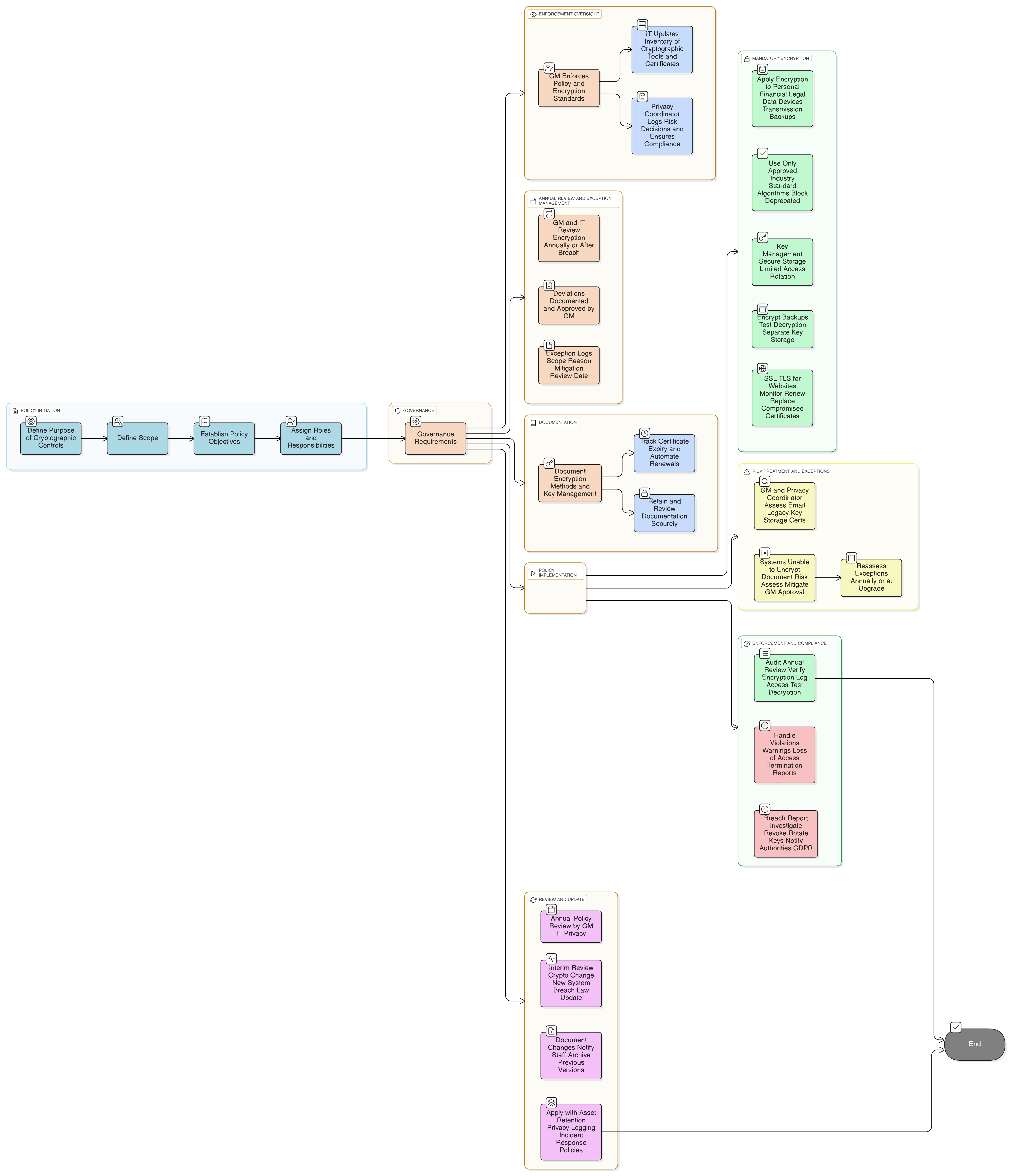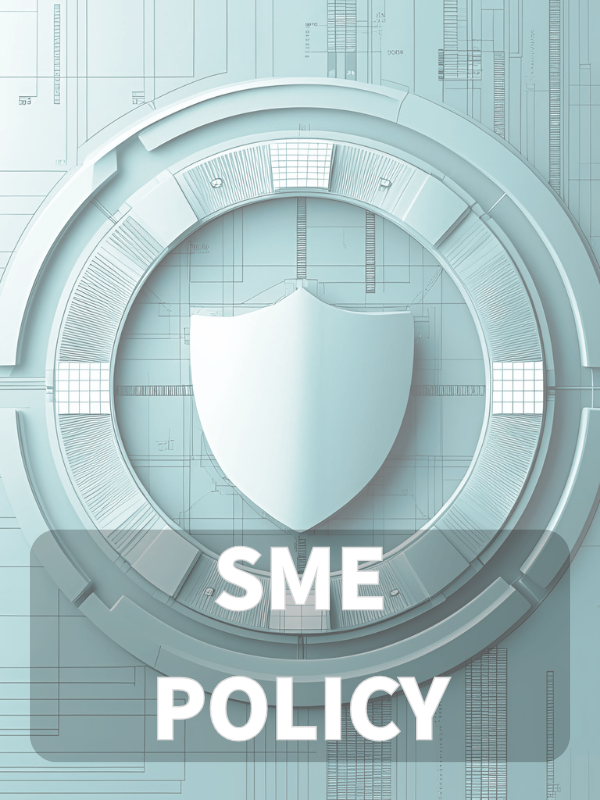Overview
This policy sets comprehensive SME-focused requirements for encryption, key management, backups, and certificate handling, ensuring compliance with ISO/IEC 27001:2022 and regulations like GDPR, NIS2, and DORA.
End-to-End Encryption
Mandates encryption for all sensitive business, personal, and financial data at rest and in transit.
Key Management Security
Requires secure cryptographic key storage, access control, and routine rotation.
SME-Friendly Policy
Designed for small businesses without dedicated IT teams, ensuring regulatory compliance.
Compliant With Regulations
Aligns with ISO/IEC 27001:2022, GDPR, NIS2, DORA, and COBIT security standards.
Read Full Overview
Policy Diagram

Click diagram to view full size
What's Inside
Scope and Rules of Engagement
Roles and Responsibilities (SME-focused)
Key Management Controls
Backup and Certificate Management
Encryption Algorithm Requirements
Risk Treatment and Exception Handling
Framework Compliance
🛡️ Supported Standards & Frameworks
This product is aligned with the following compliance frameworks, with detailed clause and control mappings.
Related Policies
Asset Management Policy-SME
Ensures that encryption is applied to classified assets during storage, transfer, and disposal.
Data Retention And Disposal Policy-SME
Defines retention periods and requires encrypted storage of data until securely deleted.
Data Protection And Privacy Policy-SME
Aligns encryption with data protection principles and regulatory expectations under GDPR Article 32.
Logging And Monitoring Policy-SME
Requires logging of key usage, encryption failures, and certificate expirations for audit purposes.
Incident Response Policy-SME
Details escalation, containment, and notification procedures when encryption fails or keys are compromised.
About Clarysec Policies - Cryptographic Controls Policy - SME
Generic security policies are often built for large corporations, leaving small businesses struggling to apply complex rules and undefined roles. This policy is different. Our SME policies are designed from the ground up for practical implementation in organizations without dedicated security teams. We assign responsibilities to the roles you actually have, like the General Manager and your IT Provider, not an army of specialists you don't. Every requirement is broken down into a uniquely numbered clause (e.g., 5.2.1, 5.2.2). This turns the policy into a clear, step-by-step checklist, making it easy to implement, audit, and customize without rewriting entire sections.
Automated Certificate Renewal
Requires tracking SSL/TLS certificate expirations and automating renewals, reducing risk of security gaps.
Clear Role-Based Accountability
Assigns and defines encryption duties for actual SME roles like the GM, IT Provider, and Privacy Coordinator.
Robust Exception Handling
Documents risks for unsupported systems and mandates mitigations, reviews, and approvals for every exception.
Frequently Asked Questions
Built for Leaders, By Leaders
This policy was authored by a security leader with 25+ years of experience deploying and auditing ISMS frameworks for global enterprises. It's designed not just to be a document, but a defensible framework that stands up to auditor scrutiny.
